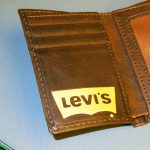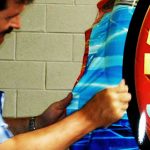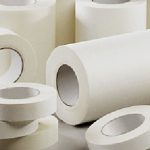Take the NEPATA challenge. Can you rewind and label three (3) ten (10) yard rolls in two (2) minutes with your current converting workflow? NEPATA simplifies the converting process delivering precise material cuts, highly accurate rewinds and advanced inventory control, allowing for quick delivery times across a wide range of media. Stop wasting time, eliminate inventory […] Read more »
Changing Printer Settings in Roland Versaworks

How to create a custom profile in Roland Versaworks. Read more »
Plotter Cutting Heat Transfer Vinyl Films

If you are a sign maker and have a plotter or printer, garment decorating with heat transfer films is one of those prize opportunities that requires a very short learning curve and an investment in a heat press. The cost for a good clamshell press runs about $1000 to $1200, but you can buy one for […] Read more »
Heat Pressing Appliques on Leather

Discover which SEF heat transfer film to use when decorating leather. Avoid problems which could cost loss of time and materials, when making appliques. Read more »
Application Temperature Range

To avoid problems with vinyl or any other pressure-sensitive material, carefully read the vinyl manufacturer’s technical data sheet. Product bulletins will usually contain all of the information you need, including application temperature range. The application temperature range for most vinyl films is usually between 50⁰ and 90⁰F (10⁰ to 32⁰ C). For some films, the minimum application temperature […] Read more »
Avoiding Application Tape Problems

For many indoor applications, you can generally leave most paper application tapes on vinyl graphics for a year or longer, provided that the graphics are stored away from sunlight in moderate temperatures. Read more »
Why Install Graphics in a Relaxed State
Years ago professional decal installers were taught to install vinyl graphics in a relaxed state without stretching the film. While vinyl films today are much more robust and can withstand the stresses encountered when wrapping a vehicle, you are much less likely to experience film failure, if you adhere to some of the old rules. […] Read more »
Applying Vinyl Graphics to Painted Wood
In this story Jim Hingst explains the rules for successfully applying vinyl graphics to painted wood. Read more »
The Trouble with Shrinking Shirts

What can you do to prevent wrinkled heat transfer appliques? Possible solutions include buying pre-shrunk tee-shirts or pre-pressing garments prior to heat pressing an applique. Read more »
Stretching Garments Prior to Heat Pressing

Some screen printers, who print directly onto t-shirts or who print plastisol heat transfers, will stretch the garment before printing or heat pressing. By doing this, the weave of the shirt opens up allowing the ink to better penetrate the fibers of the fabric. This practice is believed to prevent cracking of the ink. Read more »


